ABM Archive Website
THIS WEBSITE CONTAINS ARCHIVE MATERIALS FOR HISTORICAL REFERENCE ONLY
For up-to-date information, including our latest appeals, news, and resources, please visit our current website.
ACT Alliance Nepal Earthquake Response
February 18, 2016
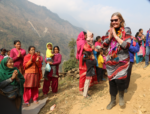
A Photo Essay by Julianne Stewart
In January, 2016, ABM Programs Director, Julianne Stewart, participated in a Joint Monitoring Visit to monitor the work of all the ACT Alliance partners responding to the Nepal earthquake, some eight months after the two earthquakes hit. These are some highlights of her report.
(All images © Julianne Stewart/ABM, 2016 unless otherwise captioned.)
 |
| Julianne is greeted by villagers in Sindhupalchowk. © Navaraj Wagle/ACT Alliance, 2016. |
In the afternoon of ANZAC Day last year, news began to reach Australia that a level 7.3 earthquake had hit the Kathmandu Valley in Nepal, with potentially horrendous loss of life. A little over two weeks later, another earthquake was reported, less than 100km to the east if the capital.
The total loss of life from both earthquakes was more than 8,600 people, and numerous people were made homeless.
Australians, including ABM’s supporters, were keen to help, and $180,000 was received for ABM’s appeal.
ABM does not normally work in Nepal. But we are a part of an international Christian ecumenical organization called ACT (Action by Churches Together) Alliance. Several ACT partners had been working in Nepal for many years, and had the ability to quickly mobilize local people and materials to provide immediate assistance where it was most needed. One of these was Lutheran World Federation (LWF), whom ABM chose to support with our funding. LWF aimed to reach 15,000 households comprising 82,500 people in the six affected districts, with emergency food and transitional shelter, basic cooking and household equipment, hygiene kits, and, as the immediate needs were met, repairing water points, training communities and schools in psycho-social support for trauma and supporting the most vulnerable people to re-establish their livelihoods, as well as training and cash grants for the most vulnerable groups in communities for re-building their houses.
LWF worked cooperatively with other ACT partners, the Nepali government at both national and district levels, and with other responding organisations via what are called “cluster groups”.
We heard from many communities during the visit. This one in Sindhupalchowk, near the epicentre of the second earthquake, had lost their Village Development Office, and were operating from a tent.
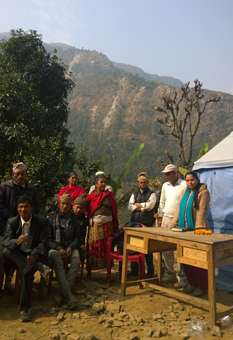 |
Women members of a Water, Sanitation and Hygiene community management group in Dolakha District. Water sources were often lost in the earthquakes and new ones had to be found and tanks and taps put in place.
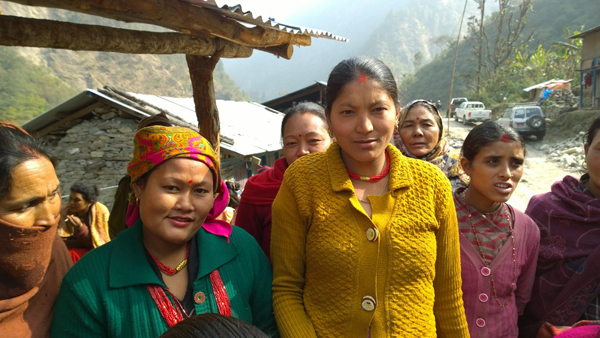
This mother and baby are benefitting from the assistance of Lutheran World Federation and local partner, HURADEC, in building the infrastructure to obtain clean drinking water in their village.
 |
These school children received musical instruments and games to help them recover from the trauma of the earthquakes. They also got new access to clean drinking water.
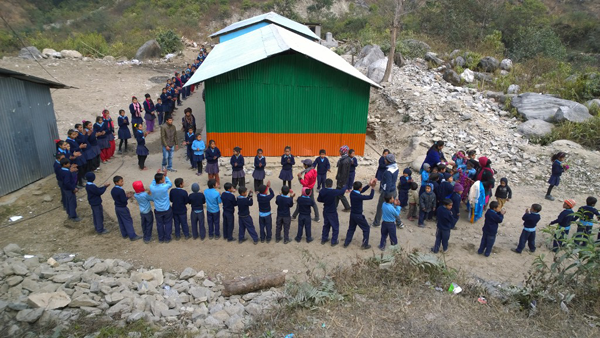 |
This Indigenous community received trauma support and the most vulnerable were given assistance to re-establish their livelihoods (farm animals, restocking a shop, vegetable seeds), as well as temporary shelter.

This school had its toilet block rebuilt, and, in the spirit of “building back better”, had a clean water filter installed and basins that were low enough for smaller children to reach.

These people are managing the distribution of winterisation kits (contents vary, but often include blankets, a polystyrene floor mat, a small efficient wood-burning stove).
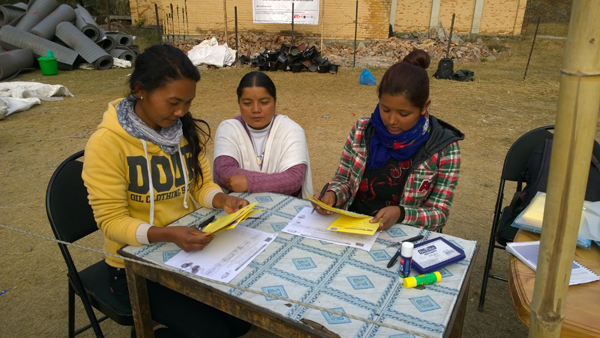
Polystyrene mats await collection as part of “winterisation” packages for the most vulnerable people who lost their homes.
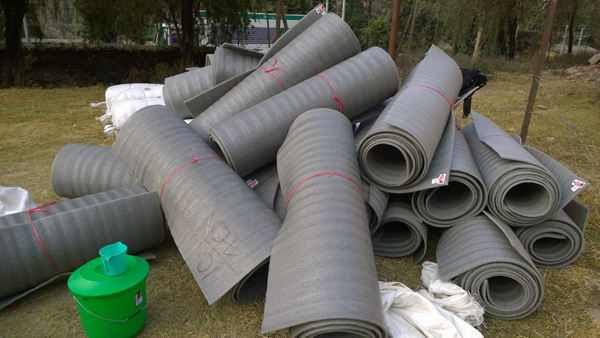 |
A model temporary house, made from wood frames and mud cladding.
 |
Village Development Council meet with members of the ACT Alliance Joint Monitoring group in Baramchi Village.
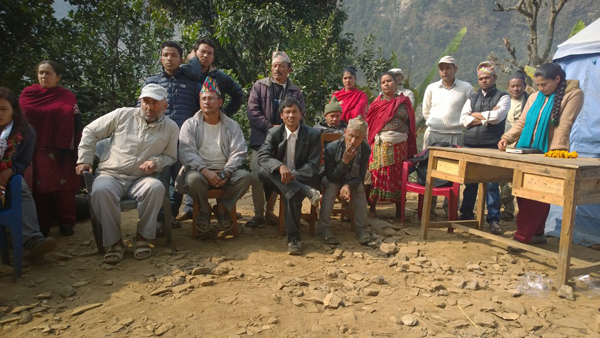
Health and Hygiene training is normally included in any water project.

Woman using an almost complete drinking water point. The tap was to be installed shortly after this photo was taken. After the earthquake many villages found their water sources, such as mountain springs, had been destroyed, and new ones had to be found and piped to the community.
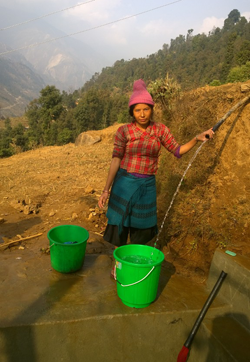 |
The response focussed most on the most vulnerable people, which include ethnic minorities, Dalits, Indigenous people, the elderly and people with a disability. Lalbahadur, a Dalit man, who is disabled due to a stroke, received support from LWF to purchase a buffalo after the earthquake. Now he reports that he makes 5,000 rupees a month from selling buffalo milk.
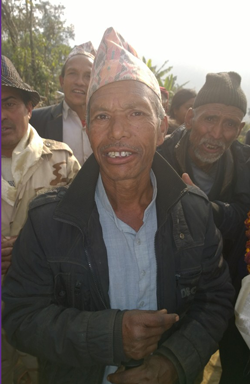 |
Nepali earthquake victims still face serious challenges. There have been delays in government producing guidelines on the construction of permanent housing, and many people have not received any assistance at all. However, all the people whom we met expressed their appreciation of the ACT Alliance response, and a strong hope that they would soon be able to get their lives back to normal.


